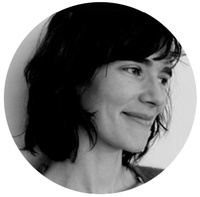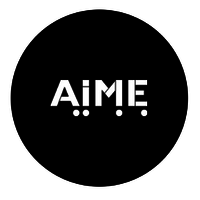Virginie Mira
Scenographer, architect

Virginie Mira is both an architect and a yoga teacher, and her interest is in projects which integrate movement as a fundamental component of the spatial approach.
She proposes spaces in which material is explored without the imposition of certain shapes. These materials are always open to transformation and manipulation by the bodies of the dancers, creating different perspectives in the space, which becomes reactive, reconfiguring with the movement which leaves its own traces.
She creates these spaces, fantasizing about their capacity to enter into interaction with the bodies of the dancers and the audience. With her work she also questions the invisible line separating the stage and the house, constantly seeking to push that line back.
The two women work from their strengths, dance and architecture, establishing a vivid interdependance between the body and its space. The bodies are shaped by the space as it is transformed and the space can then be revealed by the bodies in movement.
The projects of Julie Nioche and Virginie Mira create very visual, strong movement images which envelop the gaze of the spectators, who empathize with what is happening onstage.
In their work, the body is at risk, it is fragile yet powerful, it is a body working through constraints, a solitary, connected body, a body which is always seeking balance.
A complete universe is created in each of their pieces, the result of multiple exchanges between the two artists, anticipating the desired constraints and their oneiric potential. A subtle leveling-off takes place between the presence and the identity of the proposed stage space and the creativity and unity of the choreography, such that each entity exists on its own as well as interacting with the other.
The two women began their artistic collaboration in 2004 with the creation of H2O-NaCl-CaCO3, in which a single body moved in and around three inflatable white masses. They moved and “breathed” with the body, metamorphosing at each movement to better absorb the dancer’s body.
In 2007, they created Matter, an aquatic universe for four women, all wearing long white paper dresses which melted as they came into contact with the water, meaning we progressively saw more and more of their naked, or nearly naked bodies, while the stage floor transformed from white into black and we saw the degradation and abandon these bodies experienced in the construction of the individual.
In 2010 came Nos solitudes in which a suspended body is linked to a series of spaced counterweights onstage. The dance happens inside this system of cables, pullies and weights, demanding of the body a constant, flowing adjustment to the laws of gravity and physics.
In Voleuse the creative process was somewhat different; in this work Julie Nioche “answered” a stage proposition made by Virginie Mira. The propeller which is the principal component of the set became the beginning of both the dramaturgy and the dance. The choreographer guided the four women in the elaboration of the metaphor of the space through the dance.
And the collaborative links between Nioche and Mira continue to evolve.

